An ancestral stomatal patterning module revealed in the non-vascular land plant Physcomitrella patens
- PMID: 27407102
- PMCID: PMC5047656
- DOI: 10.1242/dev.135038
An ancestral stomatal patterning module revealed in the non-vascular land plant Physcomitrella patens
Abstract
The patterning of stomata plays a vital role in plant development and has emerged as a paradigm for the role of peptide signals in the spatial control of cellular differentiation. Research in Arabidopsis has identified a series of epidermal patterning factors (EPFs), which interact with an array of membrane-localised receptors and associated proteins (encoded by ERECTA and TMM genes) to control stomatal density and distribution. However, although it is well-established that stomata arose very early in the evolution of land plants, until now it has been unclear whether the established angiosperm stomatal patterning system represented by the EPF/TMM/ERECTA module reflects a conserved, universal mechanism in the plant kingdom. Here, we use molecular genetics to show that the moss Physcomitrella patens has conserved homologues of angiosperm EPF, TMM and at least one ERECTA gene that function together to permit the correct patterning of stomata and that, moreover, elements of the module retain function when transferred to Arabidopsis Our data characterise the stomatal patterning system in an evolutionarily distinct branch of plants and support the hypothesis that the EPF/TMM/ERECTA module represents an ancient patterning system.
Keywords: Evolution; Patterning; Peptide signalling; Stomata.
© 2016. Published by The Company of Biologists Ltd.
Conflict of interest statement
The authors declare no competing or financial interests.
Figures
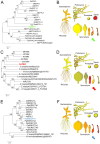
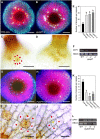
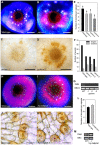
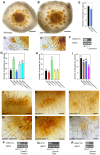
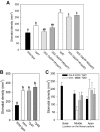
Similar articles
-
Origins and Evolution of Stomatal Development.Plant Physiol. 2017 Jun;174(2):624-638. doi: 10.1104/pp.17.00183. Epub 2017 Mar 29. Plant Physiol. 2017. PMID: 28356502 Free PMC article. Review.
-
Differential Function of Arabidopsis SERK Family Receptor-like Kinases in Stomatal Patterning.Curr Biol. 2015 Sep 21;25(18):2361-72. doi: 10.1016/j.cub.2015.07.068. Epub 2015 Aug 27. Curr Biol. 2015. PMID: 26320950 Free PMC article.
-
Mix-and-match: ligand-receptor pairs in stomatal development and beyond.Trends Plant Sci. 2012 Dec;17(12):711-9. doi: 10.1016/j.tplants.2012.06.013. Epub 2012 Jul 21. Trends Plant Sci. 2012. PMID: 22819466 Review.
-
Origin and function of stomata in the moss Physcomitrella patens.Nat Plants. 2016 Nov 28;2:16179. doi: 10.1038/nplants.2016.179. Nat Plants. 2016. PMID: 27892923 Free PMC article.
-
A receptor-like protein acts as a specificity switch for the regulation of stomatal development.Genes Dev. 2017 May 1;31(9):927-938. doi: 10.1101/gad.297580.117. Epub 2017 May 23. Genes Dev. 2017. PMID: 28536146 Free PMC article.
Cited by
-
Shouting out loud: signaling modules in the regulation of stomatal development.Plant Physiol. 2021 Apr 2;185(3):765-780. doi: 10.1093/plphys/kiaa061. Plant Physiol. 2021. PMID: 33793896 Free PMC article. Review.
-
A Locus Controlling Leaf Rolling Degree in Wheat under Drought Stress Identified by Bulked Segregant Analysis.Plants (Basel). 2022 Aug 9;11(16):2076. doi: 10.3390/plants11162076. Plants (Basel). 2022. PMID: 36015380 Free PMC article.
-
Reducing Stomatal Density in Barley Improves Drought Tolerance without Impacting on Yield.Plant Physiol. 2017 Jun;174(2):776-787. doi: 10.1104/pp.16.01844. Epub 2017 May 1. Plant Physiol. 2017. PMID: 28461401 Free PMC article.
-
Small EPIDERMAL PATTERNING FACTOR-LIKE2 peptides regulate awn development in rice.Plant Physiol. 2022 Aug 29;190(1):516-531. doi: 10.1093/plphys/kiac278. Plant Physiol. 2022. PMID: 35689635 Free PMC article.
-
Proteome Analysis of the Gametophytes of a Western Himalayan Fern Diplazium maximum Reveals Their Adaptive Responses to Changes in Their Micro-Environment.Front Plant Sci. 2019 Dec 17;10:1623. doi: 10.3389/fpls.2019.01623. eCollection 2019. Front Plant Sci. 2019. PMID: 31921265 Free PMC article.
References
-
- Beerling D. J. (2007). The Emerald Planet: How Plants Changed Earth's History. Oxford: Oxford University Press.
Publication types
MeSH terms
Substances
Grants and funding
LinkOut - more resources
Full Text Sources
Other Literature Sources
Molecular Biology Databases

